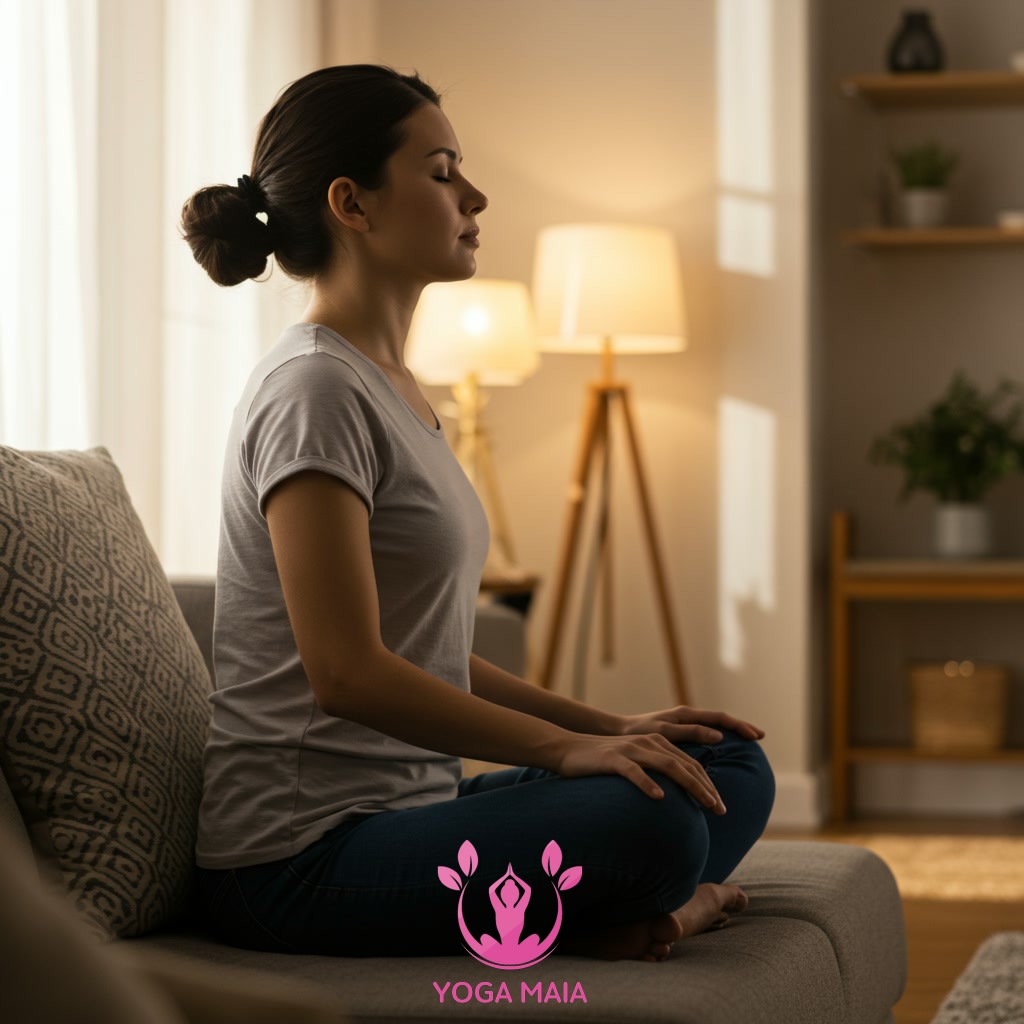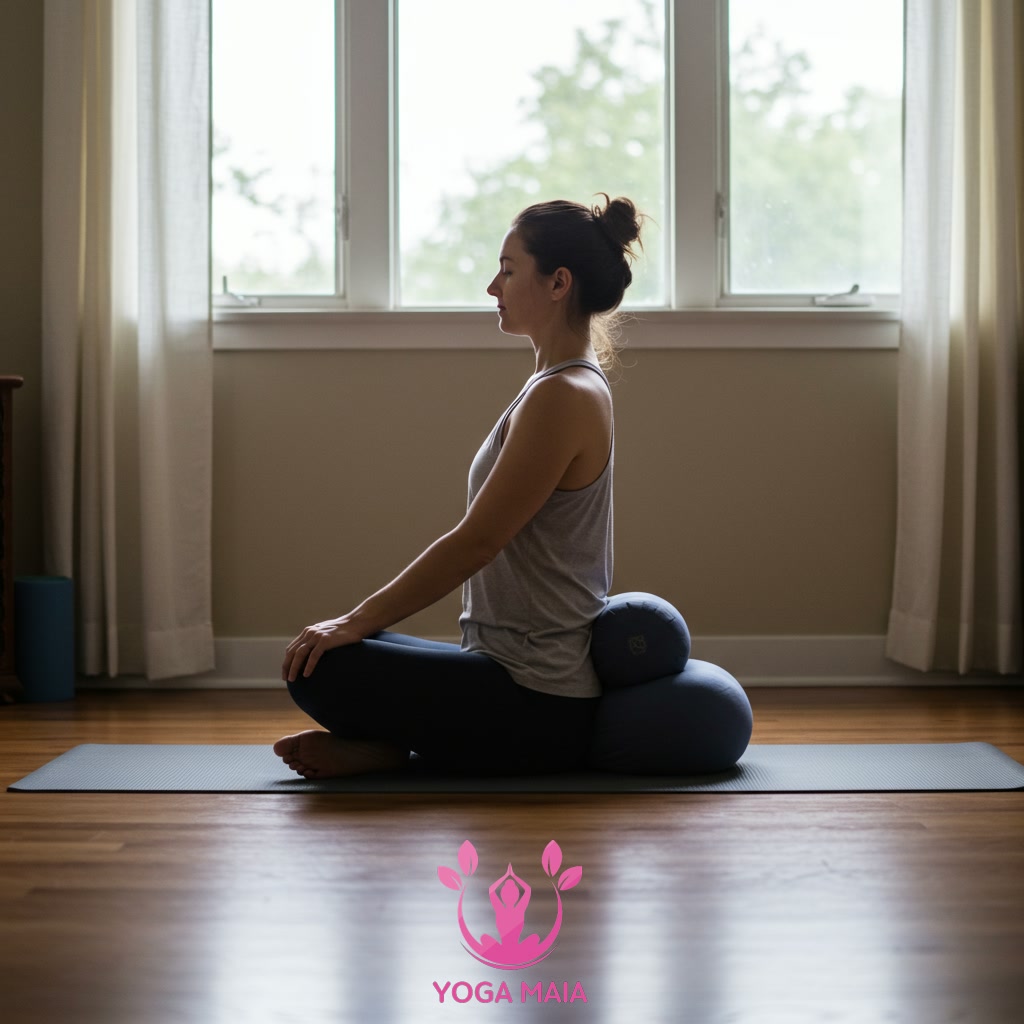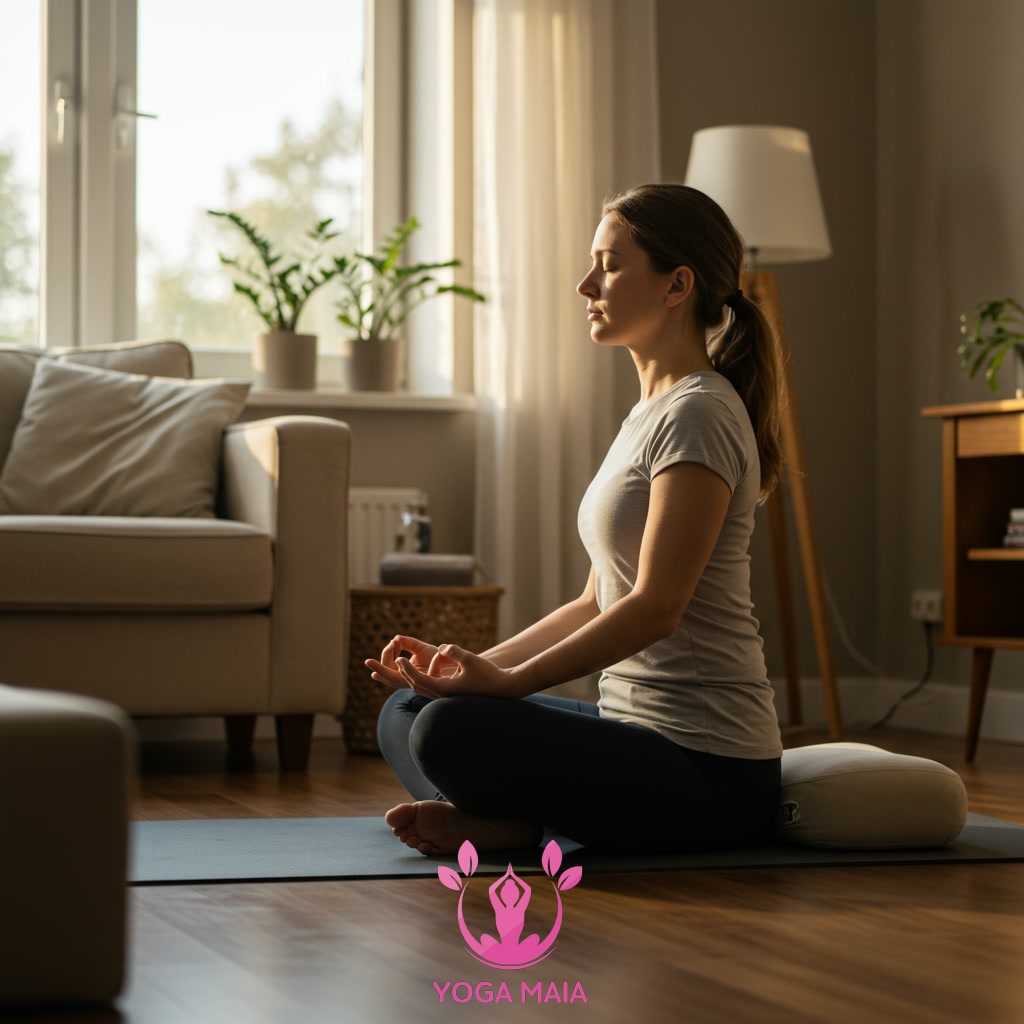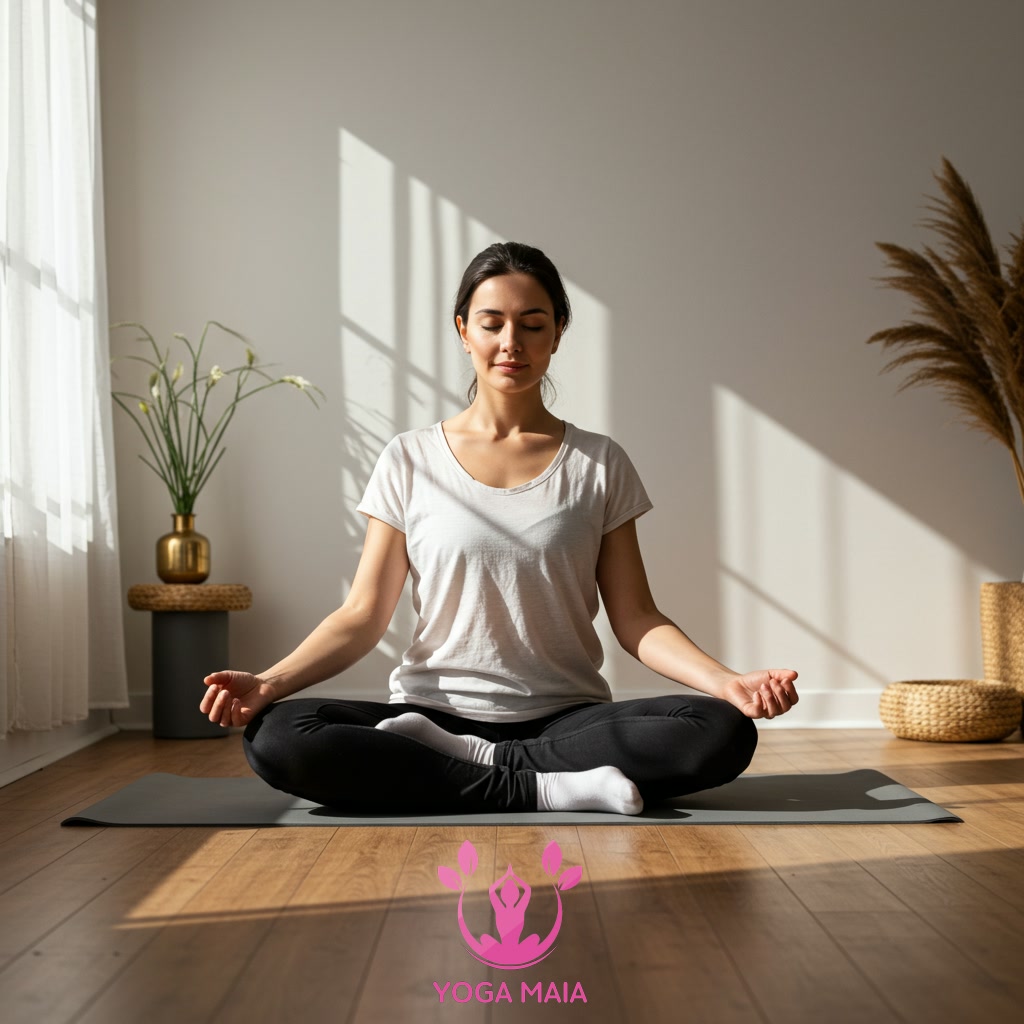Yoga Blog
Harnessing Breath and Yoga Techniques to Alleviate Chronic Pain

This content explores how specific breathwork and yoga practices can help manage chronic pain. It delves into the principles behind using controlled breathing and gentle movement to soothe discomfort. The focus is on practical techniques derived from yoga traditions that individuals can utilize for pain relief. By integrating these methods, the aim is to provide tools for improved physical well-being and pain management.
Table of Contents
- Section 1: Understanding Chronic Pain and the Potential of Mind-Body Approaches
- Section 2: The Physiology of Breath: How Conscious Breathing Impacts Pain
- Section 3: Key Breathwork Techniques for Alleviating Chronic Pain
- Section 4: Gentle Yoga Practices Tailored for Chronic Pain Management
- Section 5: Integrating Breath and Movement: Synergistic Effects of Yoga and Pranayama
- Section 6: Practical Steps for Incorporating Breath and Yoga into Your Routine
- Section 7: Conclusion: Empowering Yourself with Breath and Yoga for Pain Relief
Section 1: Understanding Chronic Pain and the Potential of Mind-Body Approaches
Chronic pain is a complex experience that involves not only physical sensations but also deeply impacts the nervous system and the mind. Unlike acute pain, which serves as a clear warning signal, chronic pain persists for extended periods, often leading to stress, anxiety, and reduced quality of life. Understanding this mind-body connection is crucial, as it highlights why traditional medical treatments alone may not fully address the subjective experience of pain. Mind-body approaches, such as certain breathwork and yoga techniques, offer powerful complementary tools. They work by helping individuals modulate their nervous system response, reduce stress, improve body awareness, and change their relationship with pain, thereby unlocking the potential for improved coping and a greater sense of well-being.
 Understanding Chronic Pain and the Potential of Mind-Body Approaches
Understanding Chronic Pain and the Potential of Mind-Body Approaches
Section 2: The Physiology of Breath: How Conscious Breathing Impacts Pain
Building on the previous point about chronic pain involving the nervous system, conscious breathing directly influences this system. Specifically, slow, deep breathing stimulates the vagus nerve, which is a key component of the parasympathetic nervous system, often called the “rest and digest” system. Activating the parasympathetic system helps counterbalance the “fight or flight” response (sympathetic nervous system), which is often heightened in chronic pain states. This shift reduces stress hormones like cortisol, lowers heart rate and blood pressure, and promotes a state of relaxation. By reducing overall physiological stress and tension, conscious breathing can modulate the body’s pain response and increase tolerance, offering a non-pharmacological tool for managing discomfort.
 The Physiology of Breath: How Conscious Breathing Impacts Pain
The Physiology of Breath: How Conscious Breathing Impacts Pain
Section 3: Key Breathwork Techniques for Alleviating Chronic Pain
Building on the previous point about chronic pain involving the nervous system, conscious breathing directly influences this system. Specifically, slow, deep breathing stimulates the vagus nerve, which is a key component of the parasympathetic nervous system responsible for the ‘rest and digest’ state. Activating this system helps counteract the ‘fight or flight’ response often heightened in chronic pain states, leading to reduced muscle tension, lower heart rate, and a calming effect on the mind. Key breathwork techniques derived from yoga traditions, such as diaphragmatic breathing (deep belly breathing) and Ujjayi breath (ocean sounding breath), are particularly effective. Diaphragmatic breathing encourages fuller oxygen exchange and promotes relaxation, while Ujjayi breath provides a rhythmic focus that can distract from pain sensations and further calm the nervous system. Regular practice of these techniques provides individuals with a powerful tool to modulate their pain response and improve overall well-being.
 Key Breathwork Techniques for Alleviating Chronic Pain
Key Breathwork Techniques for Alleviating Chronic Pain
Section 4: Gentle Yoga Practices Tailored for Chronic Pain Management
Building on the calming effect of conscious breathing on the nervous system, gentle yoga practices further support chronic pain management by addressing physical tension and promoting ease of movement. Tailored approaches within yoga emphasize slow, mindful postures (asanas) executed with awareness and without forcing. These modified poses often utilize props like blocks, bolsters, and straps to provide support, reduce strain, and allow the body to relax into the shape. The focus shifts from achieving complex poses to listening deeply to the body’s signals, respecting limitations, and finding comfortable ranges of motion. By gently releasing physical restrictions and improving flexibility, these practices can help break the cycle of pain-induced guarding and stiffness, contributing to improved overall physical function and a greater sense of well-being.
 Gentle Yoga Practices Tailored for Chronic Pain Management
Gentle Yoga Practices Tailored for Chronic Pain Management
Section 5: Integrating Breath and Movement: Synergistic Effects of Yoga and Pranayama
Building on the calming effect of conscious breathing on the nervous system, integrating breathwork (Pranayama) with gentle yoga postures creates a powerful synergy for managing chronic pain. Coordinating your breath with movement—inhaling to prepare and exhaling to deepen a stretch or release tension—amplifies the physical benefits. The breath helps guide the movement, making it smoother and more controlled, while the movement can open the body, facilitating deeper and more effective breathing. This combined practice enhances body awareness, helping you notice subtle sensations without judgment and encouraging release rather than resistance to discomfort. By fostering a deeper connection between mind, body, and breath, this integrated approach cultivates a state of calm and presence, significantly contributing to pain alleviation.
 Integrating Breath and Movement: Synergistic Effects of Yoga and Pranayama
Integrating Breath and Movement: Synergistic Effects of Yoga and Pranayama
Section 6: Practical Steps for Incorporating Breath and Yoga into Your Routine
Incorporating breathwork and gentle yoga into your daily life for chronic pain management is most effective when approached with consistency and mindfulness. Begin by dedicating just a few minutes each day, perhaps starting with simple seated breathing exercises (Pranayama) and progressing to gentle movements like cat-cow or child’s pose. Find a quiet space free from distractions and listen carefully to your body, adjusting postures as needed. The key is integration: consciously coordinating your breath with movement, allowing the exhale to facilitate release in tight areas. Establishing a regular routine, even a short one, helps build resilience and provides a structured approach to soothing discomfort through mindful movement and controlled breathing.
 Practical Steps for Incorporating Breath and Yoga into Your Routine
Practical Steps for Incorporating Breath and Yoga into Your Routine
Section 7: Conclusion: Empowering Yourself with Breath and Yoga for Pain Relief
Building upon the consistency and mindfulness discussed previously, this conclusion highlights how breathwork and yoga serve as potent tools for self-empowerment in managing chronic pain. These practices go beyond mere techniques; they offer a pathway to cultivate a deeper connection with your body and its responses. By consciously engaging with your breath and exploring gentle movements, you are actively participating in your well-being, shifting from a passive experience of pain to a more active role in seeking comfort and resilience. This empowerment stems from gaining a sense of control over your nervous system’s reaction to discomfort and fostering a mindset of acceptance and strength. Integrating breath and yoga consistently allows you to build internal resources, leading to improved physical function and a greater sense of agency in navigating the challenges of chronic pain, ultimately enhancing your overall quality of life.
 Conclusion: Empowering Yourself with Breath and Yoga for Pain Relief
Conclusion: Empowering Yourself with Breath and Yoga for Pain Relief












